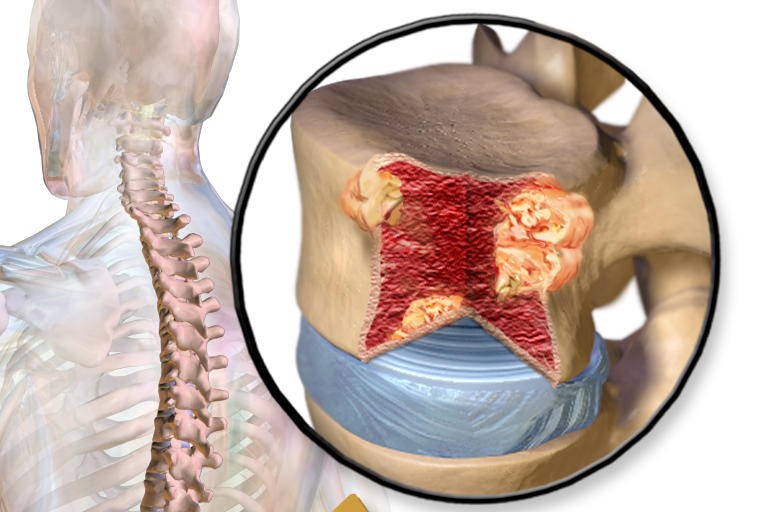
Multiple myeloma: what are the symptoms?
Multiple myeloma is a cancer that affects the plasma cells in the blood, a special type of white blood cell that acts as a defence against infections and diseases
Myeloma causes the body to produce more plasma cells than necessary; these cells cluster in the bone marrow and other bone tissues, giving rise to tumour masses and lesions.
In multiple myeloma, tumours form in various places in the skeleton, especially in the arms, ribs, skull, femurs and spine.
The causes and risk factors of multiple myeloma
The causes are still unknown, although recent studies have shown abnormalities in chromosome structure and specific genes in patients with the disease.
However, some risk factors are known, first and foremost age, with more than two thirds of diagnoses occurring in people over the age of 65 and only 1% in people under 40.
Family history and exposure to ionising radiation or certain chemicals (pesticides, benzene, arsenic, lead) may also be risk factors.
Myeloma usually affects men more than women and, to date, no specific prevention strategies can be established.
How multiple myeloma manifests itself: symptoms
During the early stages, multiple myeloma is asymptomatic and is often diagnosed occasionally, during investigations unrelated to the disease.
As the myeloma spreads, typical symptoms occur such as:
- localised bone pain in the areas affected by the tumour lesions, as a consequence of hypercalcaemia, which increases at night and with movement;
- lassitude, anaemia and weight loss, due to the proliferation of plasma cells in the marrow, which impairs the blood cell production process;
- other neurological symptoms, often due to vertebral collapse, and renal failure.
When multiple myeloma is at an advanced stage, the clinical picture becomes characterised by immunodepression (one becomes more vulnerable to infection), episodes of nausea and vomiting, difficulty urinating, and bone fragility with possible lesions.
Diagnosis of multiple myeloma
In most cases the onset of multiple myeloma is preceded by a usually asymptomatic phase, which in 25% of cases is discovered by chance during routine tests.
When there is a suspicious clinical picture (bone pain, spontaneous fracture, asthenia), the doctor requests blood and urine tests to check for increased production of abnormal immunoglobulin, whether there is anaemia, signs of renal insufficiency, hypercalcaemia.
If suspicions are confirmed, an examination with a bone marrow biopsy is required.
The presence of a monoclonal component in the blood, plasma cells in the bone marrow and related organ damage confirm the diagnosis of multiple myeloma.
Therapy and treatment of multiple myeloma
To date, it is not possible to cure multiple myeloma.
However, the choice of therapy to limit the incidence of symptoms and improve the patient’s quality of life will depend on the site and stage of the tumour, age and general condition of each case.
In the initial phase of multiple myeloma, the approach is generally a wait-and-see approach to observe the likelihood of the disease evolving.
When, on the other hand, multiple myeloma is in the active phase, treatment options include:
- Chemotherapy and radiotherapy: these are the treatments most commonly used on elderly patients to directly destroy cancer cells without damaging healthy ones;
- Stem cell transplantation: this is among the most advanced methods, as these cells are capable of giving rise to a new marrow. Stem cell therapy is ideal for patients with optimal age and general physical condition;
- Surgery: mainly used to stabilise a spinal column damaged by the disease, such that it causes paralysis or excessive weakness. Rarely, however, it may be used to remove myeloma.
Read Also:
Emergency Live Even More…Live: Download The New Free App Of Your Newspaper For IOS And Android
Lung Cancer: Symptoms, Diagnosis And Prevention
Low Haemoglobin, High Haemoglobin, Causes And Normal Values
What Are Myomas? An Overview Of This Benign Tumour Of The Female Pelvis
The Symptoms, Diagnosis And Treatment Of Bladder Cancer
Radiotherapy: What It Is Used For And What The Effects Are
Pancreatic Cancer: What Are The Characteristic Symptoms?
Chemotherapy: What It Is And When It Is Performed
Ovarian Cancer: Symptoms, Causes And Treatment
Breast Carcinoma: The Symptoms Of Breast Cancer
CAR-T: An Innovative Therapy For Lymphomas
What Is CAR-T And How Does CAR-T Work?


